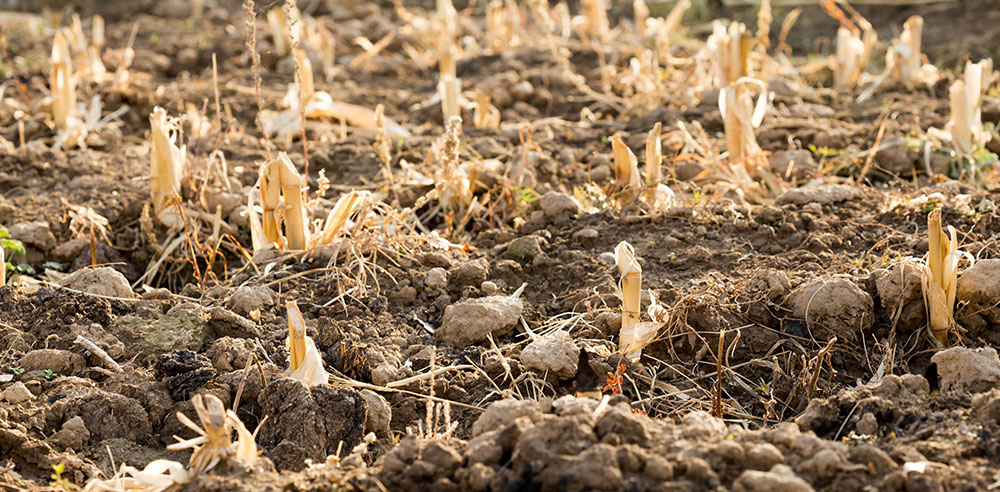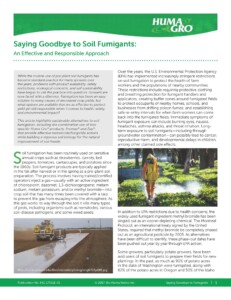
Also, according to Sass, no-till allows the soil to absorb much more water and handle heavy rain, which keeps soil on the field and out of the watershed. He continues, “No-till will save you time and money. You’ll spend less time on your tractor. You’ll use less fuel. You’ll have less wear and tear on your equipment. No-till is a win-win for your soil and for your pocketbook.”
Which is not to say that there is nothing you can do in the fall to help prepare your soil for spring planting and fortify the microbiome. Our Fertil Humus® product, when applied in the fall, can help degrade any crop residue or crop field trash that’s left behind and convert it to humus over the winter. It also stimulates microbial activity, especially mycorrhizal fungi that have a symbiotic relationship with plant roots. These fungi play a key role in freeing nutrients that are tied up in soil organic matter.
Fertil Humus® will buffer the toxicities of left-over pesticides, breaking their hydrocarbon chains to render them ineffective. It will also decrease phosphorus toxicity (e.g., from over-applied chicken manure) that can lead to zinc-manganese tie-up/deficiency. For fall after-harvest field application, we recommend Fertil Humus® at 1–2 quarts/acre (2.5–5.0 liters/hectare) as a broadcast spray or flood or furrow irrigated. This will set up your soil for spring planting with better tilth, microbial activity, and nutrient availability.
For more information on Fertil Humus® click here, or contact a Huma representative. For more about our Huma® plant & soil products, click here.
Related Posts

Saying Goodbye to Soil Fumigants
An Effective and Responsible Approach A New White Paper from Huma Gro® While the routine use of pre-plant soil fumigants has become standard practice for many growers over the years, problems with product availability, safety restrictions, ecological concerns, and soil sustainability have begun to call the practice into question. Growers are now faced with a...

Popcorn Farmer Combats Current Farming Challenges
An Interview with Nebraska Farmer Dan Hilger By Jael Batty Popcorn grower Dan Hilger fights weeds, erosion, flooding, and low commodity prices with an innovative approach that improves his soil health. The Nebraska farmer applies Huma Gro® products (biostimulants) to his soil to increase soil organic matter. Organic matter stimulates soil biology to break down...

The Value of Humic Substances in the Carbon Lifecycle of Crops: Humic Acids, Fulvic Acids, and Beyond
Long-term soil health can be greatly improved through proper tillage, soil husbandry, crop management, and the addition of organic materials for the natural production of humic substances.

